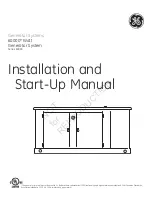
1 5
user manual LokSound / LokSoundXL V3, 1st edition, 07/2004
Set Up and installation of the decoder
After you have checked above points you may switch
on the power.
We strongly recommend to carry out this initial check
on a track section with overload protection.
Programming tracks of modern digital systems offer
this protection. Our LokProgrammer (part Number
53450) also offers extremely reliable overload
protection.
The pre-set engine address is 03.
Does the engine travel in both directions?
Turn the lights on: are they operating correctly? If the
LokSound decoder was built into an engine with NEM
/ DCC interface: check if the plug has been inserted
correctly.
4.1 Analogue operation
4.1.1 DC operation
Operation using a conventional DC controller is possible
without any problems but there is one limitation. The
engine will only start moving when the track voltage
reaches 7–8 Volts. Maximum speed will be reached
when turning the controller to the limit. This is
absolutely normal and is due to the minimum voltage
the LokSound decoder requires for operation. Running
sounds are available in this operating mode but not
additional sound effects.
4.1.2 AC operation with conventional
Märklin® controller
Operation with conventional Märklin® controllers
works as you know it from other models. Speed is
controlled by turning the knob.
To change direction the knob has to be turned to the
left beyond the stop position.
Please note:
The engine must have completely stopped before
changing direction. Never change direction while
the engine is moving!
4. Set Up and installation of the decoder
After successful installation you may now operate the
decoder.
The following will outline how you can check if you
have installed the decoder correctly. Chapter 4.1
describes analogue operation. In chapter 4.2 you learn
how to operate LokSound with various digital systems.
Before changing any decoder settings (e.g. engine
address, sound volume) we recommend to read
chapter 5. There you find out which parameters are
available and how they may be adjusted with the most
common DCC command stations.
After installation you may test the LokSound decoder
as follows.
Please check all connections carefully using an
Ohmmeter: Are there any short circuits between
the motor terminals and the wheel pick-ups? Are
all connections between motor terminals and the
chassis isolated? Are lamps connected properly
and isolated from the chassis? Is the decoder
installed safely to avoid contact with the chassis?
Is there sufficient space around the LokSound
decoder to allow for heat dissipation? Could the
LokSound decoder or any of the wires be
squeezed when refitting the housing? Is the
speaker installed in such a way that sound can
emit from the engine without obstruction?
2-1
2-2
2-3
2-4
2-5
2-6
2-7
2-8
2-9
Figure10c:
Connecting extern Reed contact
reed contact(SRK)
resistor 10k 0,25W
















































